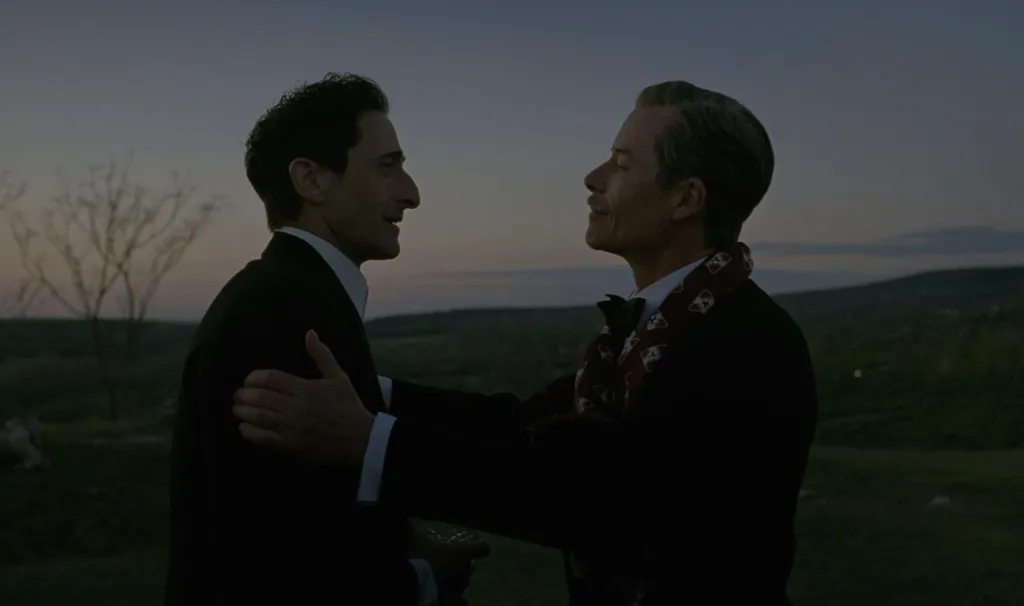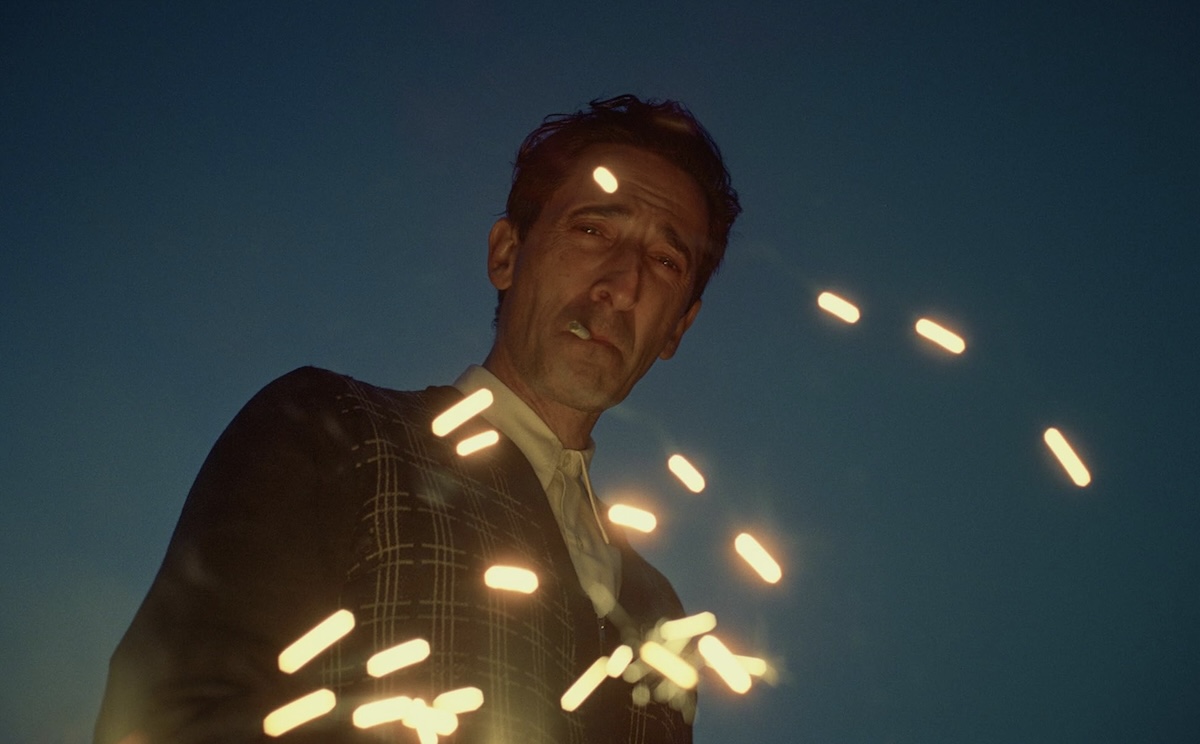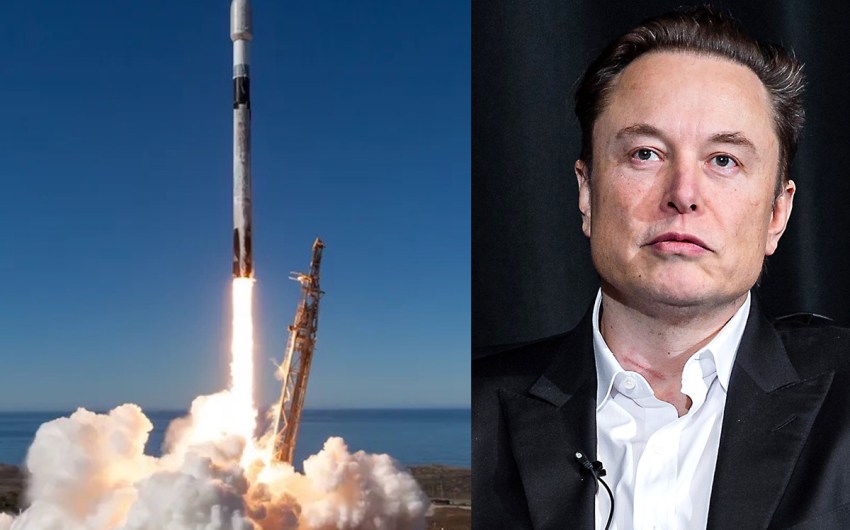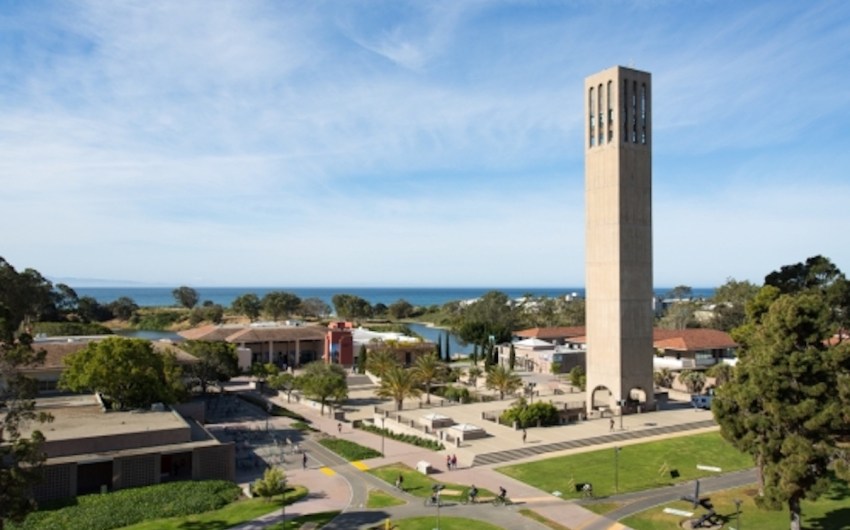There is an infamous barb — attributed to both Martin Mull and Frank Zappa — regarding the absurdity of music criticism: “Writing about music is like dancing about architecture.” In the slow-but-steadily building and engrossing film The Brutalist, we have a rare case of wide release “movie making about architecture,” and various layers, angst, and facets therein.
Yes, director and co-writer Brady Corbet’s film grapples with various themes throughout, including post WWII anti-Semitism, the alienation of displacement, and power struggles between artists and manipulative patrons, and between poverty and pompous affluence. Yet what makes the film so unique is its focus on the powers and problems of architecture.
Specifically, the ghostly but literally concrete protagonist in the story is a massive showpiece community center/chapel on a hilltop in Doylestown, Pennsylvania, a multi-year project subject to delays, mental anguish, and even sexual predator subplots. After all of the sweeping torment, difficult birth, and human toll of the project, the finally completed structure stands tall, with sentinel-like Modernist majesty on the hill, as architecture can.
Corbet, also an actor, but with a sudden, Oscar-nominated jewel in his IMDB crown, has cleverly tapped into the operatic arc of the story — an epic spanning 30-plus years in three hours of screen time. He structures the film in opera form: An overture is followed by three acts and an epilogue and is even equipped with a literal intermission in the film (a boon for viewers accustomed to the pause button in their home screening zones).

At the sometimes blissful but often chaotic center of the tale is László Tóth (Adrian Brody), a Bauhaus-trained Hungarian architect and Buchenwald survivor fresh off the boat to the U.S., who is lifted out of squalor by tyrannical patron Harrison Lee Van Buren (Guy Pearce). Van Buren hires Tóth to work on his dream/vanity project of the community center, which also serves as a temple to the male egos of both parties. Little does Van Buren realize that Tóth has surreptitiously embedded references to his experience at Buchenwald and Jewish aspects in the building’s plan, despite the strategic plotting of a cross image via sunlight through the high ceiling design.
(Both Brody and Pearce will appear in the Cinema Vanguard tribute night of the Santa Barbara international film Festival, at the Arlington on February 13. Here’s the link.)
There are other critical elements in the narrative, including the long awaited arrival of Tóth’s wife and niece from Europe (Felicity Jones is magnetic in her performance as his wife, looking like Jean Seberg). Despite the peripheral elements, though, it is the tight, tense relationship of patron and artist that pulls us most deeply into the film. One can make natural parallels to other significant and fairly recent films with tweaked historical atmospheres — namely the Scientology-esque pairing of Philip Seymour Hoffman and Joaquin Phoenix in P.T. Anderson’s The Master and Daniel Day-Lewis and Paul Dano’s gnarly power dance in Paul Thomas Anderson’s masterpiece There Will Be Blood.
The Brutalist, taking its title from both the Brutalist architectural style and the emotional sadism of its villain character, quickly zooms towards the top of the thinly populated genre of “cinema about architecture.” Like a well-designed and artfully conceived building, it should stand the tests of time and fashion. See the trailer here.










You must be logged in to post a comment.